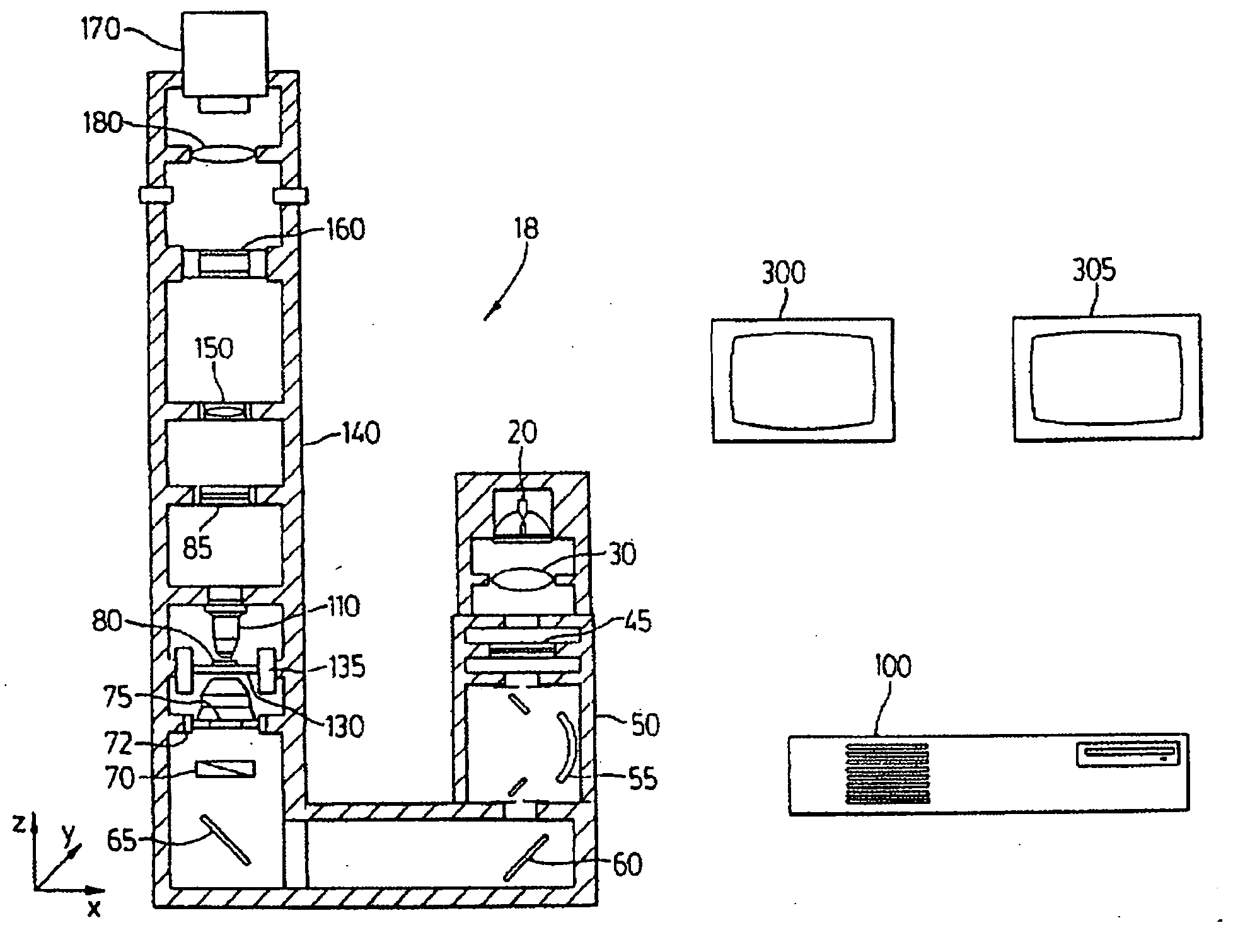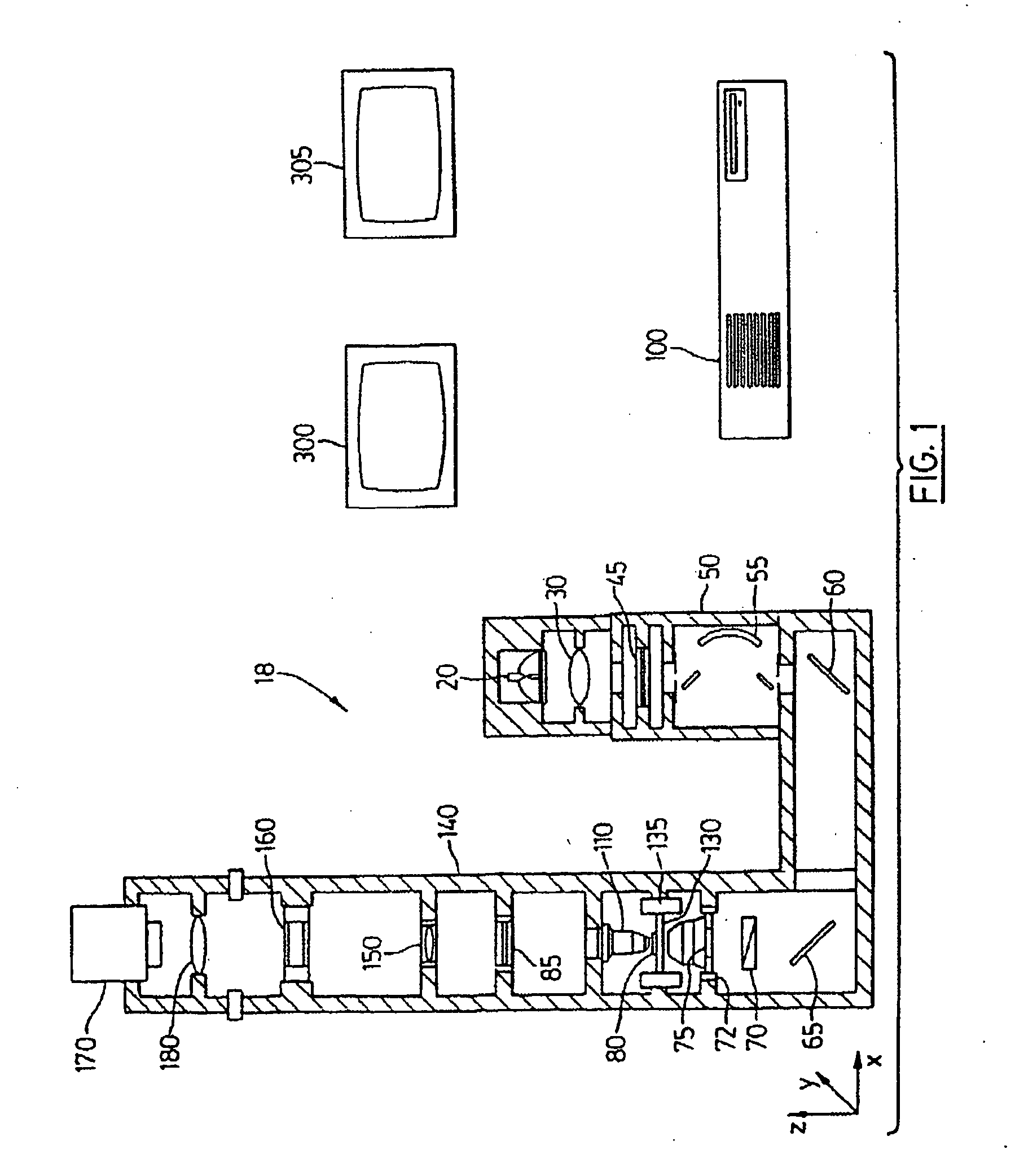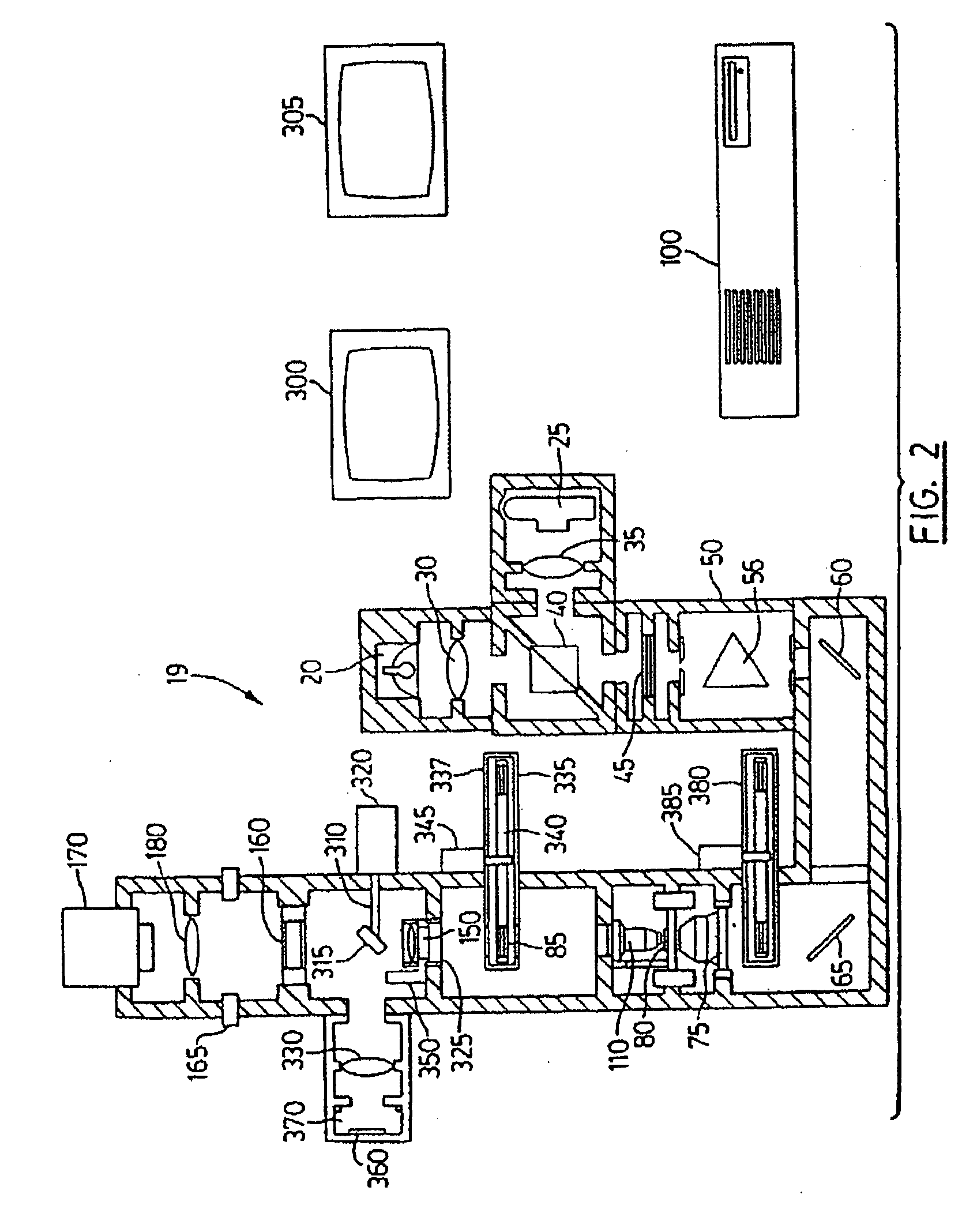Color translating UV microscope
a microscope and color technology, applied in the field of color translation microscopes, can solve the problems of high operating and maintenance burden and cost, all prior art attempts failed, and system mediocrity
- Summary
- Abstract
- Description
- Claims
- Application Information
AI Technical Summary
Benefits of technology
Problems solved by technology
Method used
Image
Examples
Embodiment Construction
[0045] This invention stems from the desire to provide a powerful new research and clinical tool which advances the state of the art in microscopes for living or dynamic sample microscopy while maintaining the sample in a state as close as possible to it's normal conditions. In the discussion below, the following abbreviations are employed with these definitions: UV—light from the spectral region of wavelengths shorter than four hundred nanometers; visible—light from the spectral region from four hundred to seven hundred nanometers; IR—light from infrared, the spectral region of wavelengths longer than seven hundred nanometers; NIR—light from near infrared, the spectral region from seven hundred to three thousand three hundred nanometers; and a subset of IR and DIC—differential interference contrast, a means of enhancing image contrast in microscopy. The terms sample denotes the particular thing being imaged by the microscope and normally placed on a slide in a stage or holder in th...
PUM
| Property | Measurement | Unit |
|---|---|---|
| wavelengths | aaaaa | aaaaa |
| wavelengths | aaaaa | aaaaa |
| wavelengths | aaaaa | aaaaa |
Abstract
Description
Claims
Application Information
 Login to View More
Login to View More - R&D
- Intellectual Property
- Life Sciences
- Materials
- Tech Scout
- Unparalleled Data Quality
- Higher Quality Content
- 60% Fewer Hallucinations
Browse by: Latest US Patents, China's latest patents, Technical Efficacy Thesaurus, Application Domain, Technology Topic, Popular Technical Reports.
© 2025 PatSnap. All rights reserved.Legal|Privacy policy|Modern Slavery Act Transparency Statement|Sitemap|About US| Contact US: help@patsnap.com



